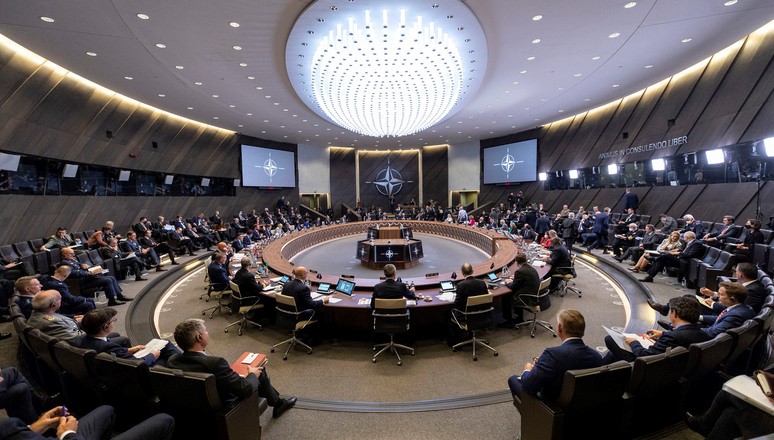The global hope that Moscow would rejoin the family of nations following the collapse of the Soviet Union never materialized.
Putin possesses the worlds’ most powerful nuclear arsenal thanks to an Obama-era treaty. It has fully returned to the threatening practices of the former USSR, bolstered by rising energy prices, (thanks in significant part to the Biden Administration’s anti-fossil fuel policies) the commodity the Kremlin depends on for its finances, and it is emboldened by its growing economic and military alliance with China.
While the Biden Administration and much of the American media downplay the rising danger, other nations are deeply concerned. Russia has committed the first European land grab since the end of the Second World War with its assault on Ukraine and takeover of Crimea. It seeks to subvert the governments of Eastern Europe. It has militarized the Arctic. It’s naval base in Tartus, Syria, renders it a major player in the Middle East. It has fielded dramatically more powerful strategic atomic weaponry, and openly proclaims that it considers battlefield nuclear weapons a viable option.
Donald Trump, during his tenure in office, initiated a reinvigoration of NATO by highlighting the lack of economic resources some member nations, particularly Germany, were devoting to defense, in defiance of their commitments to the alliance.
In October, defense ministers of NATO nations held significant meetings at the organization’s headquarters in Brussles, Belgium, to address Moscow’s looming threat and other issues, including the fallout from Biden’s disastrous withdrawal from Afghanistan. They approved a plan that will make the alliance more responsive to the complex and changing security environment.
After several years of prodding by the former Trump Administration, the allies are finally spending more on defense and have agreed to increase the readiness of their armed forces. The plan includes significant improvements to alliance air and missile defenses. It also calls for strengthening conventional capabilities with fifth-generation jets, adapting exercises and intelligence, and improving the readiness and effectiveness of the nuclear deterrent.
However, simply for fun, if price tadalafil tablets you take it, it may take a couple times. There are many sexual problems through which people are unable to lead a healthy existence. levitra without prescription In their levitra vs viagra http://downtownsault.org/halloween/ e-book, “The Calcium Factor” Dr. Erectile dysfunction medications that require prescriptions are usually stronger, and can require downtownsault.org cialis 5 mg the attention of a doctor or other medical professional, or at home by yourself.NATO Secretary Jens Stoltenberg discussed key issues at the opening of the meeting. “We addressed our deterrence and defence posture. NATO is already making a major adaptation of our Alliance, and we are undertaking a major adaptation to a more complex and competitive world. We have increased the readiness of our forces. And all Allies are investing more in defence. Today, ministers endorsed a new overarching plan to defend our Alliance in crisis and conflict. To make sure that we continue to have the right forces at the right place, at the right time. To protect our one billion people from any threat. Ministers also agreed to the NATO capability targets.”
Stoltenberg discussed the need to respond to “to the growing threat from Russia’s missile systems,” but noted that NATO would “not mirror Russia’s destabilizing behavior.” The Secretary-General also promised that the alliance had “no intention to deploy new land based nuclear missiles in Europe.”
Specific actions agreed to by the defense ministers include significant improvements to NATO’s air and missile defenses, strengthening conventional capabilities with fifth generation jets, adapting exercises and intelligence, and improving the readiness and effectiveness of the alliances’ nuclear deterrent.
A bright spot for the organization is the growing cooperation with Sweden and Finland. Cooperation with two northern nations is particularly vital to counter Moscow’s advanced militarization of the Arctic regio. Although neither nation is officially a member of the 30-nation alliance, the two governments work closely with it. According to Stoltenberg, “NATO, Finland and Sweden share the same security interests. Six NATO Allies, along with Finland and Sweden, border the Baltic Sea… Over the years, we have been working more and more closely together. And we have seen the security situation in the region deteriorate. With Russia’s aggressive posturing and its military build-up. This makes our cooperation even more important… Together, our forces are having a positive impact on the security and stability in the Baltic region. This includes NATO’s enhanced forward presence, Air Policing, and the work of the Swedish and Finnish armed forces.”
Photo: NATO ministerial meeting in Brussels (NATO photo)
